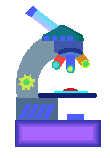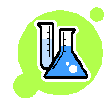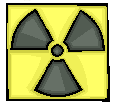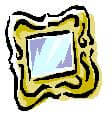A
|
 |
Aluminum Chloride: A "Can Do" Kind of Compound (AlCl3). Aluminum chloride, AlCl3, is a major industrial CATALYST, meaning it speeds up the rates of certain chemical reactions important in manufacturing. Catalysts are very useful because they reduce the amount of energy required for chemicals to react, allowing reactions to proceed quickly. And catalysts are economical: they are chemically unchanged by the reactions they accelerate, so they may be used again and again. [
more ...] |
 |
Ammonium Chloride. NH4Cl, is a component of dry cell batteries, those little storehouses of energy that power so many of our electrical devices. Batteries are awfully convenient little inventions that permit us to use electricity when we are nowhere in sight of an electrical outlet. [more ...] |
 |
Ammonium Perchlorate: Helping to Launch the Space Shuttle Discovery. The technology and planning that go into a space shuttle mission is mind-boggling. Chemistry, of course, plays a major role in space exploration, and the chlorine compound ammonium perchlorate, NH4ClO4, helps to launch space shuttles like Discovery by providing the thrust needed for lift-off at a point in time when the shuttle is at its heaviest. [more ...] |
|
top |
B
|
 |
Barium Chloride: More Than a Pretty Flash in the Sky. Many of the dazzling bursts of color that light up the night sky on the Fourth of July are brought to you compliments of chlorine chemistry. Barium chloride, BaCl2, responsible for the glittering green bursts, is this month's featured chlorine compound. But, barium chloride is much more than a pretty flash in the sky. [
more ...] |
|
top |
C
|
 |
Calcium Chloride (CaCl2
). It's January and winter in the Northern Hemisphere. If you live far enough away from the equator, these days you may be happily sledding down snowy hills or skating on frozen ponds. The winter wonderland is enchanting and fun, but it can also be dangerously slippery underfoot and on the road. Conveniently enough, chlorine chemistry provides a product that can reduce the risk of accidents on ice and snow. That product is the chemical compound calcium chloride, CaCl2. [
more... ] |
 |
Calcium Hypochlorite (Ca(OCl)2) . Calcium hypochlorite is a white solid that is added in granular or tablet form to pool water to kill germs that can make swimmers sick. Used properly, by well-trained pool operators, this compound destroys germs that are capable of causing numerous health problems for pool users--diarrhea, swimmer's ear (a nasty earache) and various respiratory, skin and wound infections. [
more ...] |
 |
Chloramines: Understanding "Pool Smell." A whiff of pool water-often described as the smell of chlorine-can stir happy thoughts of summer. If strong enough, however, "pool smell" can signify a source of irritation to the eyes, lungs and skin of swimmers. [
more ...] |
 |
Chlorhexidine: Controlling Infection in Humans and Animals. Controlling disease-causing germs is a constant challenge in hospitals, nursing homes, farms and veterinarians' offices. Chlorine-containing disinfectants are important allies in the war against germs. One such disinfectant, chlorhexidine, can be used on hard surfaces, such as medical examining tables, and also (in a more diluted form), on skin surfaces. Chlorhexidine kills bacteria, fungi (fungi, pronounced "fun guy," is the plural of fungus) and viruses that can spread sickness among people and animals. [
more ...] |
 |
Chlorinated Isocyanurates. (Eye-so-sigh-AN-your-eights) are a family of chlorine disinfectants used commonly to destroy germs and algae in pools and spas. They are also a sanitizing ingredient in automatic dishwasher detergents and other cleaning products. And where clean drinking water is unavailable due to poverty or natural disaster, chlorinated isocyanurates, in the form of granules or tablets of solid powder, can be used to disinfect water for household or emergency use. [
more ...] |
 |
Chlorine: A Multi-tasking Molecule. There are some chemicals that have so many roles in manufacturing essential products that, if they were to disappear tomorrow, life as we know it would change. Chlorine is one of those chemicals. [
more ...] |
 |
Chlorine Chemistry in the Home. The American Chemical Society, the biggest organization of professional chemists in the world, celebrates National Chemistry Week every October with programs and events to communicate the importance of chemistry to our quality of life. This year's theme, "Your Home - It's All Built on Chemistry," explores the many ways in which chemistry contributes to "Home Sweet Home." [
more ...] |
 |
Chlorine Dioxide (ClO2). ClO2 is a disinfectant compound capable of destroying a wide variety of disease-causing bacteria, viruses, molds and algae (known as pathogens). Like sodium hypochlorite, calcium hypochlorite and chlorine gas, ClO2 is a chlorine-based drinking water and wastewater disinfectant. [
more... ] |
 |
Chlorthalidone: "Water Pill" for Controlling High Blood Pressure. Our hearts pump blood throughout our bodies non-stop, 24/7, transporting oxygen and nutrients to our organs to keep us alive and functioning. As blood circulates throughout the body, it is possible to measure blood pressure--the force with which blood impacts artery walls. In some people, blood pressure is at unhealthy, high levels. Fortunately for them, there are life-style changes and medications that can be used to control blood pressure. [
more ...] |
 |
Cobalt Chloride: Colorful Moisture Detector. Cobalt chloride, CoCl2, is a fascinating compound that changes color in response to humidity. As humidity increases, cobalt chloride changes color from sky blue to purple to pink. Such striking changes in color make cobalt chloride useful as a humidity indicator in weather instruments. [
more ...] |
|
top |
D
|
 |
Doxorubicin Hydrochloride: Cancer-fighting Drug.
Cancer is a group of similar diseases that have sickened people and frustrated healers since the dawn of human history. Many types of treatments--or therapies--have been developed in an effort to control and cure cancers. Many of these have been successful and cancer researchers are busy developing new, effective therapies all the time. [
more ...] |
|
top |
E
|
 |
Epibatidine: Natural Frog Poison with A Surprising Benefit to Humans. For centuries, natives of the Colombian tropical rainforest have prepared for hunting by rubbing the tips of their blow darts on the skin of a tiny frog, aptly nicknamed the "poison-dart" frog. They do this to coat their blow dart tips with a toxin that, even in small amounts, can paralyze or kill animals. In fact, the amount of toxin in just one of these frogs should be enough to kill a huge water buffalo, hundreds of times its size! [
more ...] |
|
top |
F
|
 |
Ferric Chloride: Clearing the STUFF Out of Water (FeCl3). When it comes to making drinking water germ-free, certain disinfecting chlorine compounds, including chlorine gas, sodium hypochlorite and calcium hypochlorite, are public health champions. But there is another chlorine compound that deserves recognition for its role in helping make water clean and clear. That compound is ferric chloride (FeCl3). [
more ...] |
|
top |
G
|
 |
Gold Chlorides: Naturally Concentrating the King of Metals. From the childhood fairy tale of that rascal Rumpelstilskin, who had the power to spin straw into gold, to the adult world of finance and the gold standard, gold is seen as a symbol of great value. So, from where does this King of Metals come? [
more ...] |
|
top |
H
|
 |
Healthy Pools4Summer Fun. As the days grow warmer and the school year winds down, students and their families are gearing up for summertime activities. Whether you plan to go to camp, work at a summer job, travel, enjoy hobbies, participate in sports or just relax with no scheduled activities at all (imagine that?), chances are good you will swim in a pool sometime this summer. [
more ...] |
 |
Hydrochloric Acid (HCl)
Your stomach makes it naturally to help digest your lunch. It's used industrially to process steel, the material of choice for suspension bridges and cars and trucks. Hydrochloric acid is also used in the production of batteries, photoflash bulbs and fireworks. It's even used to process sugar and make gelatin [
more ...] |
|
top |
L
|
 |
Lazurite: Treasured Mineral in Lapis Lazuli4Summer Fun. Lazurite is the chief mineral in the treasured gemstone known as lapis lazuli, often referred to simply as "lapis." The intense blue background of this gemstone together with its golden specs of pyrite (called "Fool's Gold" because of its resemblance to actual gold) give it a radiant appearance that some compare to the beauty of a starry night sky.
[
more ...] |
| |
|
|
top |
M
|
 |
Magnesium Chloride: Source of Magnesium for Alloys. Magnesium chloride, MgCl2, dissolved in seawater, is an abundant, natural source of the very useful metal magnesium. Magnesium is a common component of alloys. Alloys are produced by combining a pure metal with one or more other elements to form a new substance with desirable properties. (Steel, for example, is a common alloy of iron and carbon.) Magnesium alloys are found in aircraft, automobiles, rockets, luggage frames, portable power tools, cameras, laptop computer casings and mobile phones. [
more ...] |
 |
Metal Chlorides That Make Fireworks Colorful! Celebrating important events with fireworks is a very old tradition that probably began in China, more than one thousand years ago. In the U.S., fireworks and the American flag are the icons of Independence Day--the Fourth of July. [
more ...] |
 |
Methylene Blue, Part 1: The Biologist's Dye. Methylene blue is a handy, colorful compound that biologists use as a dye to help them see life under the microscope. This article will explore the advantages of methylene blue and the chemistry that is responsible for its wide use as a biological dye. [
more ...] |
 |
Methylene Blue, Part 2: The Chemist's Indicator.
Methylene blue, a common stain used by biologists to help them see bacteria and other forms of life under the microscope, is also a tool of the chemist. Through color, methylene blue indicates the presence or absence of oxygen. Oxygen is necessary for many forms of life on Earth, so any compound that can help detect its presence is bound to be useful. [
more ...] |
 |
The Mineral Apatite: A Natural Source of Chlorine Ca5(PO4)3(F,Cl,OH). "Apatite" is an unusual name for a very common family of minerals that appears in small amounts in all kinds of rocks AND in large amounts in bones. The chemical formula for this mineral family looks complicated: Ca5(PO4)3(F,Cl,OH). But, don't fear--the last three components listed in the formula, separated by commas, only show how the chemical composition of the mineral family can vary. [
more ...] |
|
top |
N
|
 |
Neoprene: The First Synthetic Rubber. What do automobile tires, wetsuits, and soft coatings on exercise weights have in common? They are all made of neoprene, the first successful synthetic rubber product ever made. Invented in 1930 by DuPont company scientists (and first known as "Duprene"), 300,000 tons of neoprene are produced worldwide every year. Neoprene finds its way into many of the products we rely on every day. [
more ...] |
|
top |
P
|
 |
Polyvinyl Chloride (PVC). Society has found hundreds of uses for polyvinyl chloride, the plastic referred to simply as "vinyl" or "PVC." Chances are you have some contact with at least one PVC item every day. Doubtful? Take a look at the yellow checklist of PVC-containing products. [
more ...] |
 |
Potassium Chloride (KCl). As NASA's Mars rover Opportunity explores the Red Planet and beams valuable data back to Earth, scientists are reporting the exciting news that Mars was once a much warmer, wetter planet than it is today. And while the search for evidence of life on the Red Planet continues, strong evidence of the presence of water has been found. [
more ...] |
 |
Pyrethroids: Crop Protection Chemicals Modeled on Nature. A nation's farmland, its "bread basket," is one of its most important natural resources. Today's farmers grow the foods that feed whole cities of people hundreds or thousands of miles away from barns, silos and patchwork fields of crops. Thanks to advances in agricultural technology, farmers today can harvest more crops per acre of farmland than ever before. [
more ...] |
|
top |
R
|
 |
Radium Chloride: Historical Use in Isolating Radium and Understanding Radioactivity. Radium chloride, RaCl2, played an important role in separating the element radium from uranium ore by history's most famous scientist couple, Marie Sklodowska Curie (also known as Madame Curie) and her husband, Pierre Curie. By discovering two new radioactive chemical elements, their work greatly increased our understanding of radioactivity, a fundamental property of certain elements. [
more ...] |
|
top |
S
|
 |
Silver Chloride: Helping Us Get the Picture. Favorite photographs are the keepsakes of a lifetime. Pictures of family and friends, summer vacations and graduations--all sorts of meaningful images--are preserved for us in photos. Photography is just one of the amazing gifts of science and technology that add enjoyment to our lives. Chlorine chemistry plays a role in traditional film photography in the form of the light-sensitive compound, silver chloride, AgCl. [more ...] |
 |
Sodium Chlorate: Providing Emergency Oxygen. A chlorate candle is a device that produces oxygen when breathable air is scarce. Traditional wax candles spread soft haloes of light as they burn, a process that consumes oxygen from the air. Chlorate candles also burn, but their function is to release oxygen for emergency breathing.. [
more ...] |
 |
Sodium Chloride (NaCl). "Please pass the sodium chloride." That's just another way you can request the salt for your baked potato the next time you sit down with your family for dinner. Sodium chloride, regular table salt, is also known as the mineral halite. [
more ...] |
 |
Sodium Hypochlorite (NaOCl). Sodium WHAT? If this chemical compound sounds totally unfamiliar, maybe you'll recognize it's common name-chlorine bleach. You may know it as the liquid in that white plastic jug often spotted near the family washing machine. It's added to the laundry to kill germs and to make white clothes whiter. [
more ...] |
 |
Stannous Chloride: Silvering Mirrors. Beginning in the Middle Ages, the mirror began to resemble its present form. Craftsmen created mirrors by depositing thin layers of a reflective mixture of tin and mercury on glass. Today's mirrors are also glass, but with a thin backing of silver or aluminum. Chlorine chemistry, in the form of the compound stannous chloride, plays a role in manufacturing mirrors during the process known as "silvering." [
more ...] |
|
top |
T
|
 |
Titanium Tetrachloride: Stepping Stone to Amazing Technology. What do spacecraft, bicycles and artificial knee replacements have in common? All are made better with titanium metal. The chemical element titanium, Ti, number 22 on the Periodic Table of the Elements, is the ninth most abundant element in the Earth's crust. [
more ...] |
 |
Trichlorosilane: Cornerstone Chemical for Electronics and High-Tech Toys. Silicon chlorides are some of the cornerstone chemicals of the Information Age. Trichlorosilane (HSiCl3) is an intermediate compound used to produce extremely pure silicon, from which computer chips, the "brains" of electronic devices and high-tech toys, are manufactured. The famous high-tech industrial area of California, Silicon Valley, was named for the chemical element that has revolutionized the way we communicate and play. And chlorine has played an essential role in the high-tech revolution. [
more ...] |
|
top |